The iPhone 6 Review
by Joshua Ho, Brandon Chester, Chris Heinonen & Ryan Smith on September 30, 2014 8:01 AM EST- Posted in
- Smartphones
- Apple
- Mobile
- iPhone 6
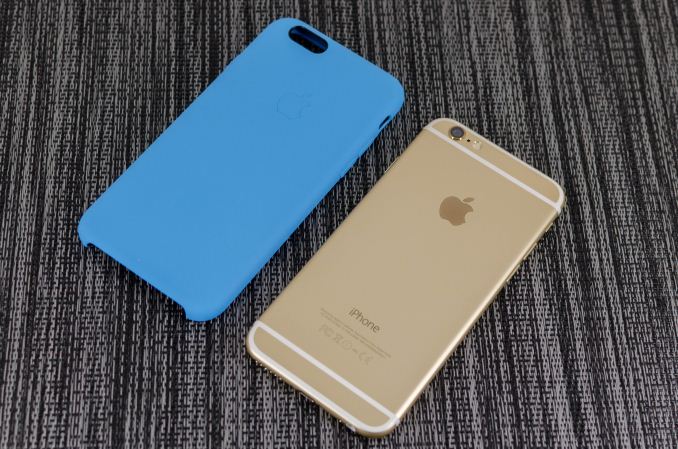
With every launch of the iPhone, Apple seems to have everything to lose and not much to gain. Apple’s iPhone line accounts for the majority of profits in the smartphone space, and as the smartphone market marches towards maturity it seems inevitable that companies like Xiaomi will be able to deliver largely similar experiences at much lower prices. The same once happened with Apple in the days of the PC industry where Apple approached irrelevance. Yet generation after generation, Apple seems to be able to hold on to a majority of profit share, and they’ve managed to tenaciously hold on to their first-mover advantage.
This brings us to the iPhone 6. This is now the eighth generation of the iPhone, and the fifth generation of the iPhone’s industrial and material design. We should note right now that this review is specifically for the iPhone 6; for the iPhone 6 Plus, please see our iPhone 6 Plus companion review. At this point, it’s not really possible to revolutionize the smartphone, and on the surface, the iPhone 6 seems to be directly inspired by the iPod Touch. However, instead of the chamfered edge where the display meets the metal unibody we see a continuous curve from the sloping glass to the metal unibody that looks and feels great. While the M8 was one of the best phones for in-hand feel, the iPhone 6 goes a step further due to the reduced weight and rounded side. I've always felt like the HTC 8X had one of the most compelling shapes for a phone, and the incredibly thin feel of the iPhone 6 definitely reminds me of that.
Along the left side, we see the standard volume buttons and mute switch that continue to have the same solid feel and clean clicking action. As I discuss in the iPhone 6 Plus review, going by Consumer Reports' data it seems that there is a weak point near the bottom of the volume rocker, although it's far less likely to be an issue on the iPhone 6 due to its smaller size. Along the top, there isn’t a power button because it’s been moved to the right side of the phone so there’s nothing notable on the top.
On the right side, we see the previously mentioned power button and also the SIM tray, which is ejected by inserting a pin into the eject hole. Similarly to the volume buttons, the power button has a solid feel that gives a distinct click when triggered and continues to be quite unique when compared to phones other than recent iPhones.
The bottom has the Lightning connector, speaker, a microphone, and 3.5mm headset jack. The placement and design of all these elements are largely similar if not shared directly with the iPod Touch.
The back of the phone continues to share elements from the iPod Touch. The camera, microphone, and LED flash are almost identical in their appearance, even down to the camera hump’s design. The LED flash does look different to accommodate the second amber flash, but the shape is identical. The only real difference is that the antennas of the iPhone 6 are the metal pieces on the top and bottom, with the associated plastic lines instead of a plastic RF window.
The front of the phone is decidedly more similar to the iPhone 5s though, with the Touch ID home button. While the earpiece hasn’t moved, it seems that the front facing camera has been moved back to the left side of the earpiece, and the sensors for light and proximity are now above the earpiece. For the most part, there’s not much to comment on here but after using the iPhone 6 for an extended amount of time I’m definitely sure that the home button is relatively closer to the surface of the display glass than before. In addition, the home button has a dramatically improved feel, with short travel, clean actuation, and a reassuring click in most cases.
Overall, while I was undecided at the launch of the iPhone 6 I definitely think the look of the new iPhone has grown on me. The camera hump’s accent serves as an interesting design touch, and the feel of the design is definitely much more comfortable and ergonomic than before. I’m not really sure that the extra reduction in thickness was necessary, but it does make for a better first impression. In the launch article I was a bit surprised that Apple chose to have a camera hump but given the fact that the iPod Touch has the same design it seems that there is precedent for such a move. I personally feel that the design wouldn’t be worse by increasing thickness to eliminate the hump and improve battery life as a result.
Apple has also introduced a new silicone case, which brings a lower price point than the leather cases. Surprisingly, this is a rather high quality case, and as far as I can tell it doesn’t carry any of the issues that silicone cases traditionally have. There’s a nice lip to make sure that the display glass doesn’t touch a surface if the phone is put face down, and the material doesn’t seem to stretch or attract pocket lint the way most silicone cases do.
There’s definitely a lot more to talk about though, and to get a sense of the major differences I’ve put together our usual spec table below.
| Apple iPhone 5s | Apple iPhone 6 | Apple iPhone 6 Plus | |
| SoC | Apple A7 | Apple A8 | Apple A8 |
| Display | 4-inch 1136 x 640 LCD | 4.7-inch 1334 x 750 LCD | 5.5-inch 1920 x 1080 LCD |
| WiFi | 2.4/5GHz 802.11a/b/g/n, BT 4.0 | 2.4/5GHz 802.11a/b/g/n/ac, single stream, BT 4.0, NFC | |
| Storage | 16GB/32GB/64GB | 16GB/64GB/128GB | 16GB/64GB/128GB |
| I/O | Lightning connector, 3.5mm headset | ||
| Size / Mass | 123.8 x 58.6 x 7.6 mm, 112 grams | 138.1 x 67 x 6.9 mm, 129 grams | 158.1 x 77.8 x 7.1 mm, 172 grams |
| Camera |
8MP iSight with 1.5µm pixels Rear Facing + True Tone Flash 1.2MP f/2.4 Front Facing |
8MP iSight with 1.5µm pixels Rear Facing + True Tone Flash 1.2MP f/2.2 Front Facing |
8MP iSight with 1.5µm pixels Rear Facing + True Tone Flash + OIS 1.2MP f/2.2 Front Facing |
| Price | $99 (16GB), $149 (32GB) on 2 year contract | $199 (16GB), $299 (64GB), $399 (128GB) on 2 year contract | $299 (16GB), $399 (64GB), $499 (128GB) on 2 year contract |
As you can see, this is a major release even at a high level. While the design might take some inspiration from the iPod Touch, the hardware is a completely different beast. There’s a new SoC, the A8; the iPhone 6 also includes a bigger and better display, newer WiFi module, bigger battery, and a better camera. Of course, there’s a lot more to the story of the iPhone 6 than a spec sheet. The first major difference that we’ll talk about is the SoC.


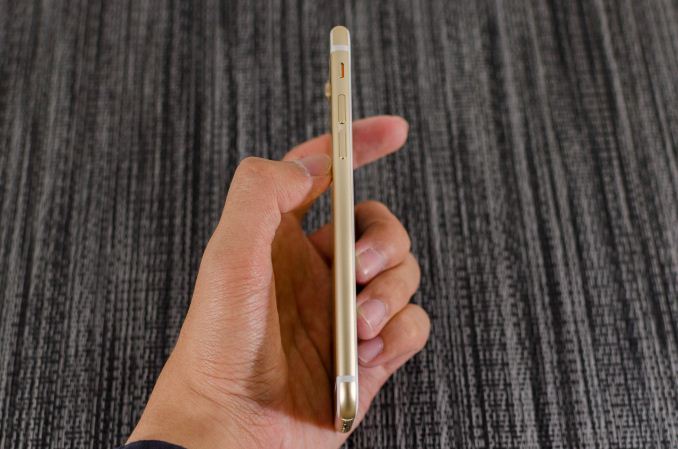
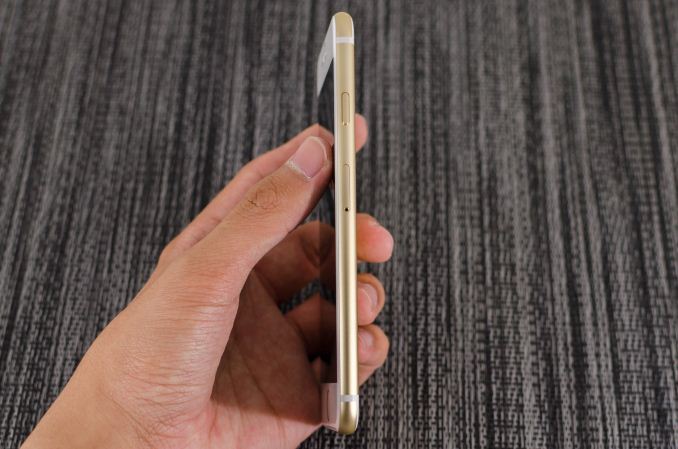
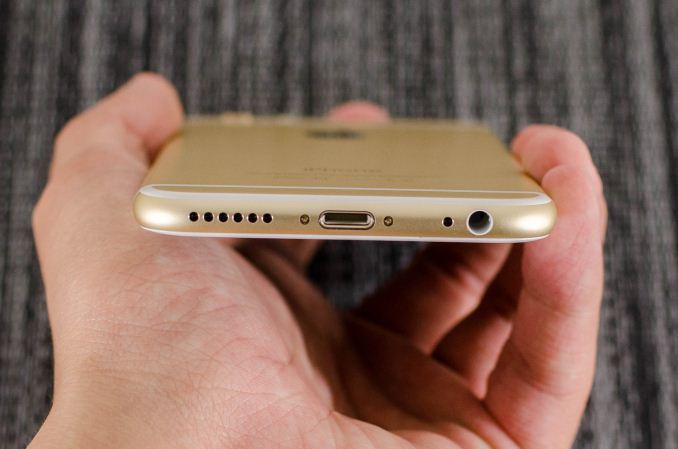
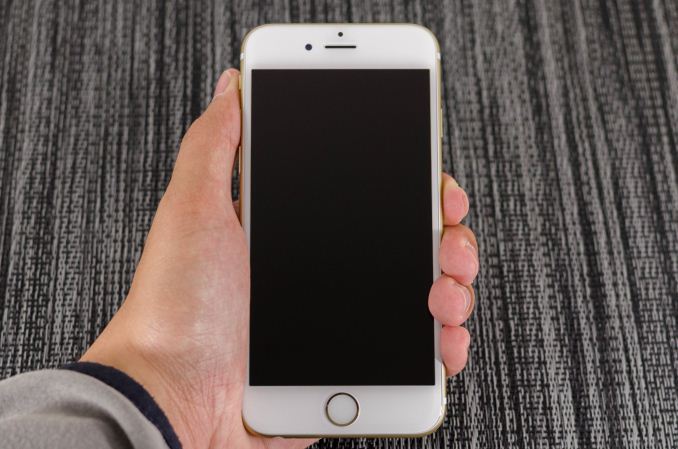
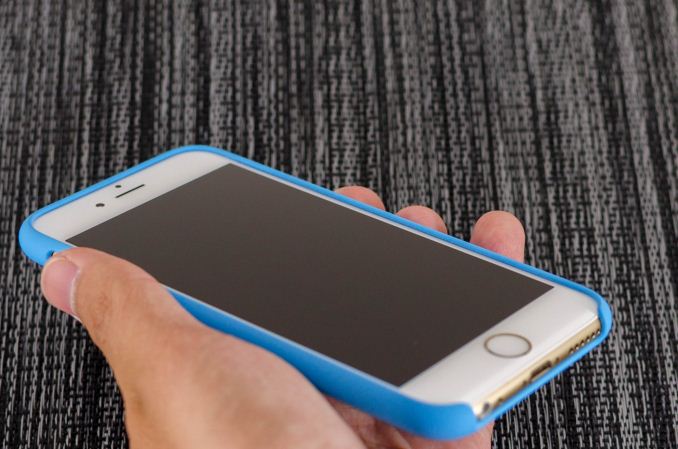








531 Comments
View All Comments
SuLyMaN - Tuesday, September 30, 2014 - link
Thanks for the really good and truthful view of crapple.flashbacck - Tuesday, September 30, 2014 - link
lol holy shitMetroid - Tuesday, September 30, 2014 - link
Agreed with everything you said + the 1gb memory on iphone 6 is utterly bs and to mention apple has been hiding the 1gb memory ram, checked their website and nothing is said or showed the 1gb memory ram, checked the specs page and nothing too, its too shameful to show it has 300% less memory ram than its competitors heheWinterCharm - Tuesday, September 30, 2014 - link
Why do they need more ram? The iPhone kills everything else in the benchmark (did you even read the anandtech review?). Apple rarely lists specs for their iDevices aside from storage. They don't need more ram when the 1GB iPhone is killing your 3GB android devices.Omega215D - Tuesday, September 30, 2014 - link
More RAM is useful for future iOS updates with advance features or new games that come out taking advantage of the larger display/ resolution. You're also forgetting that the RAM is shared with the GPU which means you're not getting the full 1GB for apps and cache. Don't forget multitasking is only going to have more of a presence in the future in terms of iOS.It seems to me Apple fans commenting on a tech site don't know much about tech and how the parts actually work.
Kidster3001 - Thursday, October 2, 2014 - link
Apple doesn't want you to keep upgrading your phone. They want you to go buy a new one. Future-proof is a 4-letter word at Apple.akdj - Friday, October 3, 2014 - link
Weird, folks drill extremely happy with their near five year old iPhone 4 & their three and a half hear old iPad 2. Future proof. Interesting word choice. As far as 'future proofing' Apple is another example of 'paving the way' that others can't seem to figure out. Everyone gets the update the Same Day, Same Time. Works perfect! Adoption rates are exponentially quicker, faster and en masse than any other OEM or OS developer. Period. And with older devices they're optimizing and elimating features that WOULD cripple the user experience.I still own the original iPad. Still works great. locked into 5.x.x but holds a ten to twelve hour charge, spotless and scratch free. Going on five years old and still VERY usable for basic tablet comouting; surfing, email and social media, media consumption including incredible 'run time' for video watching or music listening. Reading books. Simple and older games. Pretty amazing and absolutely the opposite of your statement their Kidster. But you'll grow up, gain wisdom and 'learn' fact from fantasy
Metroid - Tuesday, September 30, 2014 - link
I guess you fail to understand why memory ram is important for some specific tasks.grayson_carr - Tuesday, September 30, 2014 - link
Because you can only have, at most, 5 tabs loaded in Safari at once before they will have to completely reload, which is time consuming and annoying at best. Even less tabs can stay loaded if, God forbid, you open another app for something and then return to Safari. That is just pathetic.akdj - Friday, October 3, 2014 - link
WTH do you need more than a half dozen tabs loaded?Buy a laptop man. Give it up
iOS defekopers defekop for the masses. 512/1GB A5/6(x)/7. iOS 8 defelopment had begun but as we saw with '7‘...as time moves on the "Monument Valleys" and Asphalt 8s show up. MS Office suite and unreal 1.0 release and an example of 'how to do it right'. The list goes on.
A large web page is 17-24 megs. There's almost ALWAYS more than 250-300 free and available, typically closer to ½ of the total isn't being 'spoken for' with compression. Available and 'free'. Cached and common processes life in the availability RAM for instant swipe to the app or page population. Apple seems to think more than 'five tabs' open results in a reload is reasonable. I agree. Typically I'll have two or three. I've got plenty of computers around if I need to write a thesis with mutilple Wiki and info Tabs ready immediately.
I've never understood this 'issue'
A) why so many tabs ...and
B) the instantaneous repopulation of a page with LTE or decent Wifi is a blink of an eye. If you're commenting and need to reference something else, tap, select all, copy. Go to your reference page and when ya return ...if for some reason its 'gone' just click the response and hold finger, 'paste'. You're good. As fast as ios is on new devices it's amazing to me you guys are able to think 'faster' tan 'it'. Weird. LTE and near ubiquitous Wi.fi coverage in urban and populated areas, one shouldn't be thinking 'EDGE' reload speed. Click the empty tab and its damn near fully populated when you're ready with your finger to scroll. Who. Cares? That much of a hurry? Invest in a decent ISP and speed. Your Iphone will take care Of the rest